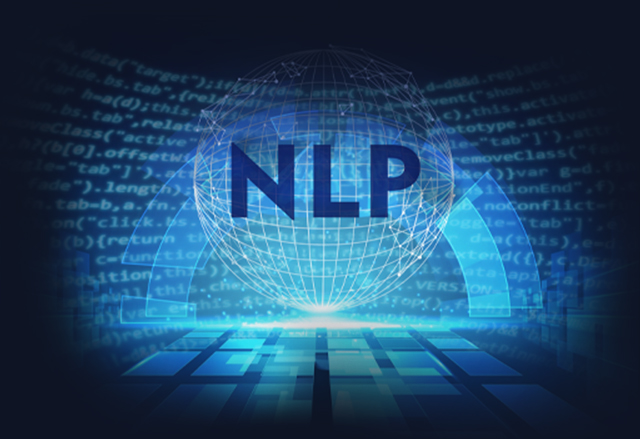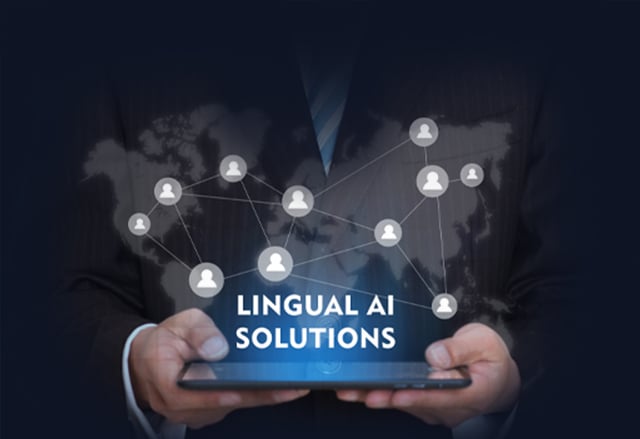Turning Data to Action: NLP's Impact on Business Strategy

Natural Language Processing (NLP) is revolutionizing how businesses harness the power of data. Beyond mere data analysis,
NLP equips machines with the ability to understand, interpret, and communicate in human language, turning complex data into actionable insights. This transformative technology is pivotal for companies transitioning from data accumulation to insightful data interpretation,
offering clarity amidst the complexities of big data.
NLP is not just a technological innovation; it's an indispensable tool in today's data-driven business landscape.
It simplifies the intricate, making sense of vast information pools and bridging linguistic barriers.
As we delve into NLP's impact, we'll see how it's not just altering data analysis,
but fundamentally reshaping business strategies and decision-making in a globally interconnected market.
Understanding NLP: Simplifying Complex Data
NLP acts as the technological bridge between human language and computer understanding.
At its core, NLP is a field that brings together linguistics, artificial intelligence, and computer science.
Its main goal is to enable machines to understand, interpret, and interact with human language.
In essence, it's about teaching computers to comprehend and produce human language in a way that makes sense and fits the context.
NLP goes beyond just understanding words. It aims to grasp the subtleties of language, such as its meaning, structure, and context.
This technology enables computers to analyze unorganized data from written or spoken sources. It extracts important information,
recognizes feelings, and can even produce responses like that of a human.
NLP Techniques For Data Processing and Analysis
NLP employs an array of techniques to process and analyze data from various textual sources.
- Breaking Text into Pieces: This technique, known as Tokenization, involves dividing text into smaller segments, such as words,
phrases, or sentences. Essential for understanding and structuring text, it sets the stage for more complex NLP tasks.
- Filtering Common Words: Using an approach called Stopword Removal, this technique focuses on eliminating frequently occurring but low-value words like "and," "the," "is." This process is key to reducing distractions and emphasizing the significant parts of the text for better analysis.
- Simplifying Words: This method includes Lemmatization and Stemming, where words are transformed to their base or dictionary forms. Lemmatization converts words to their root dictionary form, and stemming reduces them to their root by removing suffixes and prefixes,
crucial for grouping words with similar meanings.
- Identifying Key Entities: Named Entity Recognition (NER) is the process of pinpointing and classifying specific entities in the text,
such as names of people, organizations, places, and dates. It's instrumental for extracting structured information from unstructured text.
- Labelling Words Grammatically: Also known as Part-of-Speech (POS) Tagging, this method assigns grammatical categories to each word in a sentence. This technique is vital for understanding a sentence's syntactic structure, aiding in overall language comprehension and processing.
- Analyzing Emotions in Text: Sentiment Analysis is an approach that determines the sentiment expressed in a text, categorizing it as positive, negative, or neutral. Crucial in various contexts, it helps in understanding public opinion, customer feedback, and social media tone.
To Illustrate, Here Are a Few Examples
Sentiment Analysis in Customer Reviews: NLP can analyze customer feedback from reviews, social media posts, or surveys to determine sentiment.
For instance, it can identify positive or negative sentiments expressed about a product or service, providing businesses with a clear understanding of customer satisfaction levels and areas for improvement.
Chatbots and Virtual Assistants: NLP powers chatbots and virtual assistants, enabling them to understand user queries, extract intent, and generate appropriate responses. By analyzing and interpreting user input, these AI-powered systems provide instant assistance, handling tasks like answering questions, making recommendations, or guiding users through processes.
Automatic Translation and Cross-Language Analysis: NLP facilitates language translation by converting text from one language to another.
It enables businesses to expand their reach globally, understand international markets, and analyze multilingual data for diverse insights.
The Biggest Impact: Data-Driven Decision Making
As data keeps expanding rapidly, organizations confront the tough task of finding actionable insights within this massive amount of information. Various forms of unorganized data like texts, images, and videos create significant obstacles.
Conventional techniques find it hard to effectively analyze and understand this diverse information in a timely manner. Problems like data being stored separately, issues with data accuracy, and just the sheer amount of data make it tough to get useful insights and affect making well-informed decisions.
Role of NLP in Extracting Key Insights from Diverse Data Sources
By leveraging advanced algorithms and linguistic models, NLP can process and understand unstructured data from various sources.
Techniques like sentiment analysis, entity recognition, and summarization enable NLP to extract valuable insights, trends, and patterns hidden within text, audio, or visual data. This transformation of unstructured data into structured, actionable information empowers decision-makers to draw relevant conclusions and make informed choices swiftly and accurately.
For instance, in healthcare, NLP helps analyze medical records to identify potential treatments or predict patient outcomes. In finance,
sentiment analysis of news articles influences investment decisions. Retail uses NLP to understand customer sentiments for targeted marketing strategies. Additionally, in legal sectors, NLP assists in contract analysis and regulatory compliance.
Competitive Advantage Through NLP Implementation
The competitive landscape is defined by agility, innovation, customer-centricity, and the ability to adapt swiftly to changing dynamics.
Staying ahead requires not only understanding current market trends but also predicting and responding to future demands and challenges.
How NLP Implementation Provides a Competitive Edge
Implementing NLP offers a major chance for businesses to stand out from their competitors. With NLP, companies can tap into their abilities to grasp how customers feel, sift through large data sets, and automate tasks. This helps organizations streamline operations, enhance customer experiences, and swiftly make decisions based on data. This agility and understanding lead to more accurate targeting of markets, customized interactions with customers, improved efficiency in operations, and faster responses to changes in the market. These aspects distinguish leading companies in any industry.
Investing in NLP yields both short-term and long-term benefits. Initially, there's increased efficiency, better decision-making, and enhanced customer experiences. Over time, these translate into improved customer retention, increased revenue streams, reduced operational costs, and a stronger market position. NLP's adaptability and scalability ensure its relevance even as businesses evolve, ensuring a sustained competitive advantage and continued growth.
Future Outlook: NLP in Business
- Continued Improvement in Language Understanding: Advancements in deep learning and neural networks will further enhance machines' comprehension of context, nuances, and emotions in language.
- Multimodal Capabilities: NLP will expand to analyze and interpret data from various sources like text, images, and videos simultaneously,
enabling more comprehensive insights.
- Explainable AI: Developments in explainable AI will make NLP models more transparent, allowing users to understand and trust AI-driven decisions better.
- Personalization and Contextual Understanding: NLP will refine its ability to personalize interactions and understand real-time conversations in context, leading to more human-like interactions.
In the realm of business sustainability, adopting NLP has become imperative rather than optional. The capacity to quickly understand extensive unorganized data, engage customers meaningfully, and base decisions on data insights will be pivotal for staying competitive.
Embracing NLP ensures that businesses remain adaptable, responsive to shifts in the market, and adept at utilizing data for both innovation and expansion. Those hesitant to incorporate NLP technology face the risk of lagging in a landscape that's progressively reliant on data and highly competitive.
Embrace NLP today, not merely as a technology but as a catalyst for transformation, a tool that propels your business toward a future brimming with opportunities, growth, and a distinct competitive advantage.
Frequently Asked Questions (FAQs)
What are the advantages of using NLP in decision-making processes?
NLP streamlines decision-making by analyzing unstructured data, extracting insights, and automating language understanding for more efficient choices.
How can businesses choose the right NLP tools for their operations?
Businesses should evaluate NLP tools based on accuracy, scalability, integration ease, multilingual support, cost-effectiveness, and expert guidance before making a choice.
How does NLP enhance customer engagement?
NLP improves customer engagement by analyzing feedback and interactions, providing deeper insights into customer sentiments and needs.











